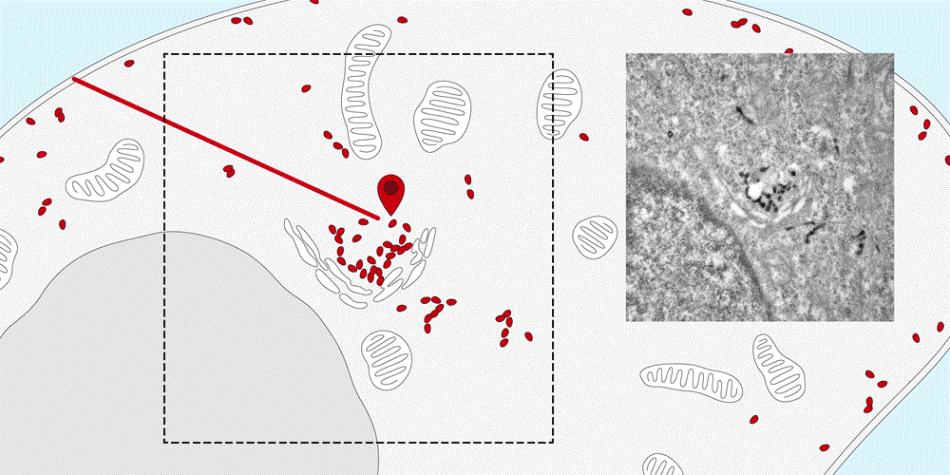Jun 21 2018
Scientists at the University of Basel’s Biozentrum have formulated a technique for tracing the movement of proteins inside a cell. They tagged proteins with minute nanosensors, so-called nanobodies, which enable the researchers to monitor and trace the proteins' pathway via the cell in real time. The technique described in the latest issue of PNAS is ideal for a wide variety of research purposes.
 Nanobodies track receptors from the cell surface to the center of the cell (the Golgi apparatus). Right: electron microscope image. (Image credit: University of Basel, Biozentrum)
Nanobodies track receptors from the cell surface to the center of the cell (the Golgi apparatus). Right: electron microscope image. (Image credit: University of Basel, Biozentrum)
Membrane proteins are a standard component of all cells of the human body and play a crucial role in the cell’s metabolism, structure, and transport. They guarantee that a number of substances, such as hormones and other proteins are conveyed from the cell surface into the cell or transported out again.
It is rather easy to establish the membrane protein distribution in the cell. Tracing the paths that they take inside the cell and identifying their anticipated destination is significantly tougher. The new nanobody tool, built by the Spiess research group at the Biozentrum, University of Basel, makes it possible to detect the movement of proteins into and out of the cell. Going forward, this quantitative technique can also be applied to reveal the molecular transport mechanisms within the cells.
Tiny Antibodies as Nanosensors
The scientists made use of so-called nanobodies (miniature antibody fragments). These are solely made up of a single protein chain and so, in contrast to antibodies that comprise four proteins, they have the benefit to be just about one-tenth of the size, stable and very compact.
Nanobodies were originally obtained from camels and llamas. We altered the nanobodies, so that we could produce them with the help of bacteria and use them as nanosensors.
Professor Martin Spiess
Nanotags Enable Live Tracking
It is possible to genetically alter the nanobodies to fluoresce. “We attach them like a tag to the targeted protein, where they remain fastened no matter which path the protein takes to enter the cell,” explains Dominik Buser, a postdoc in Martin Spiess’s lab and the study’s first author. With the aid of a microscope, the path of entry and distribution of surface proteins can be seen in living cells.
“The nanosensor with its fluorescent dye makes the exact movements of the proteins visible. This enables us to follow the natural pathways taken by the proteins into the cell, as well as the speed of transport within the cell.” Additionally, the scientists changed the nanobodies, in a manner that the proteins could be contained in the cell by the electron microscope.
In the days ahead, the team plans to apply this new technique to track and trace a range of proteins and to more meticulously explore their transport pathways.